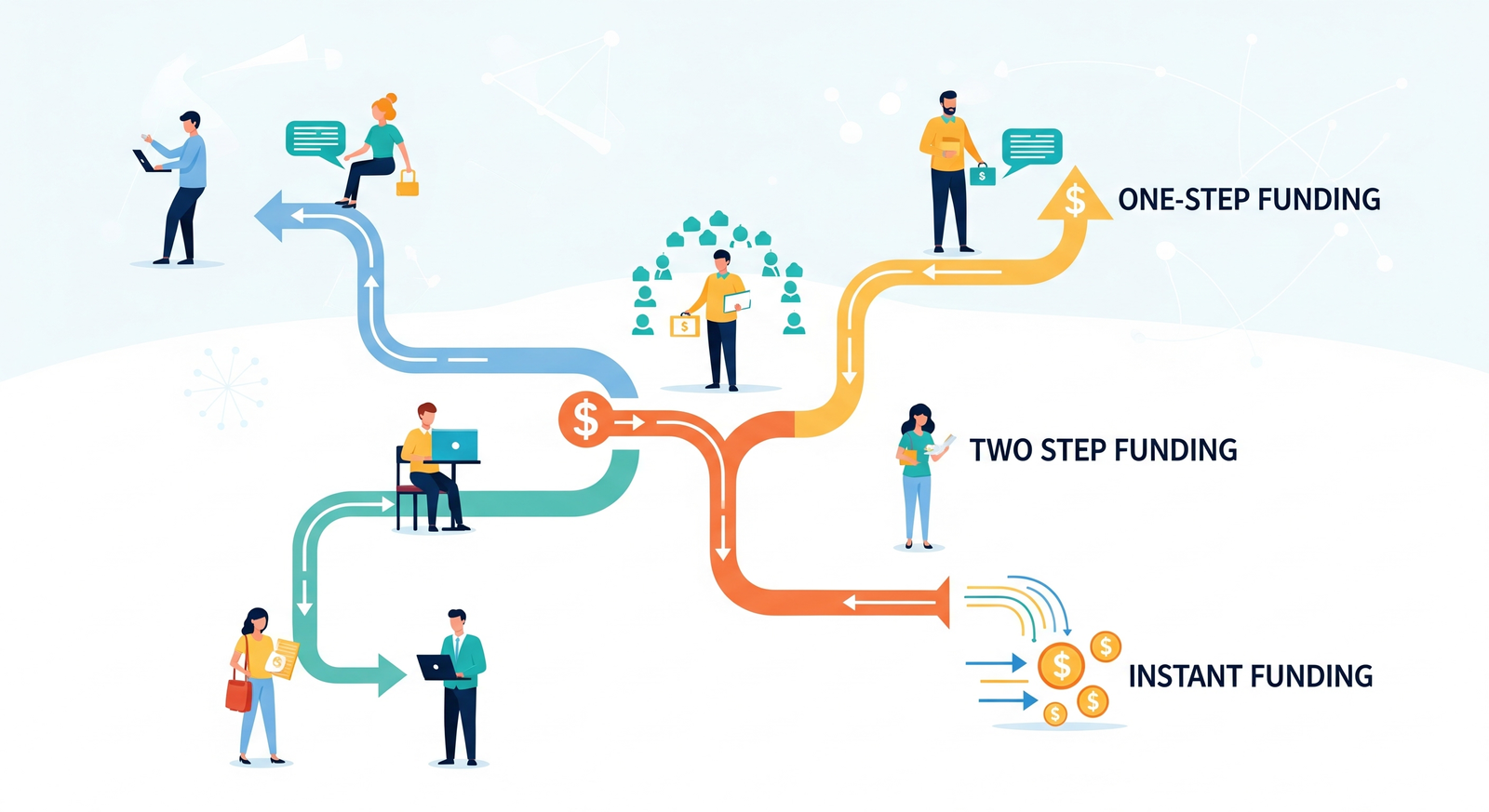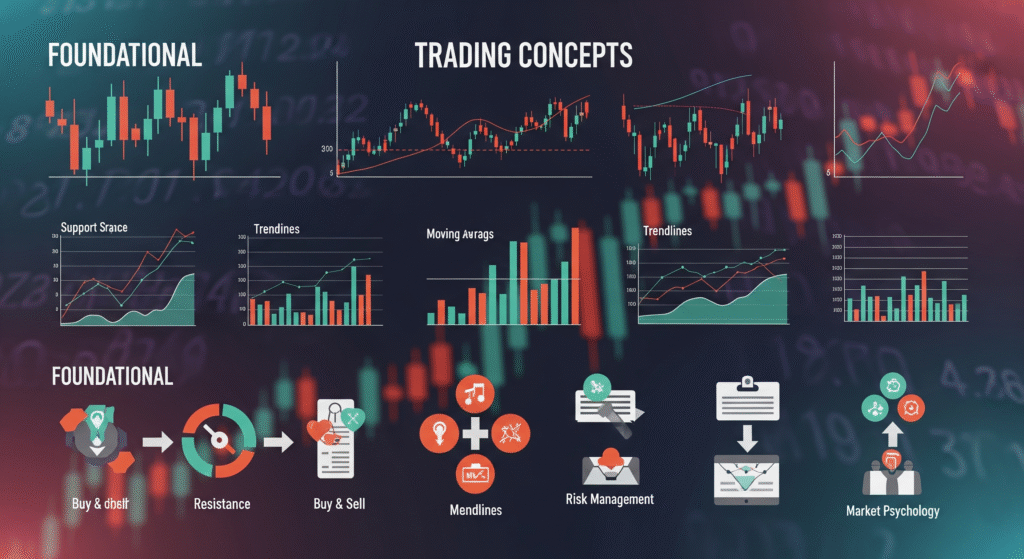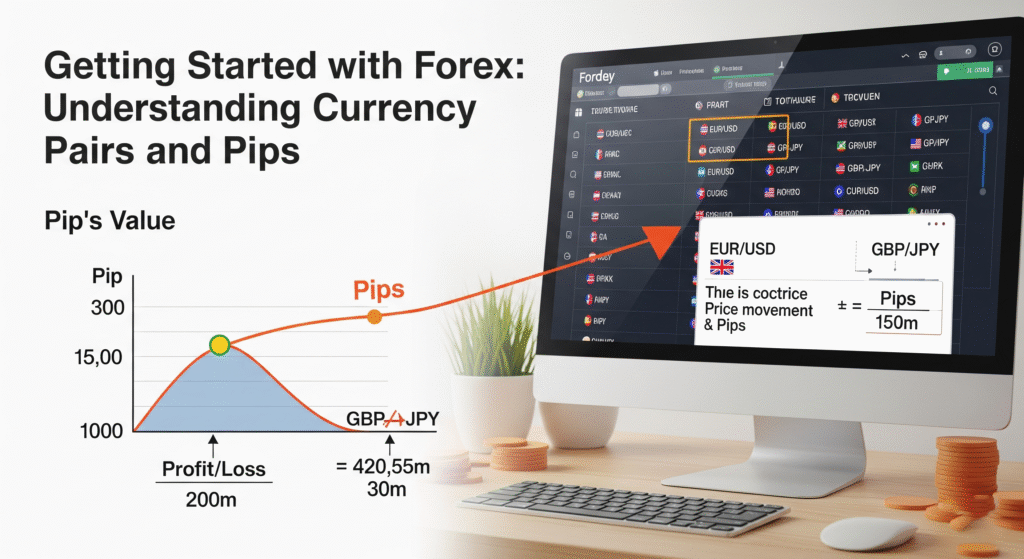He is a Full-time trader and Trading Mentor @ Findependence Trading Academy, with over 18 years of hands-on experience in the stock and forex markets. His journey from being a working professional to achieving financial independence through trading has inspired hundreds of aspiring traders to take control of their financial future.
His trading style revolves around identifying high-probability swing setups in equities and executing precise intraday trades in the forex markets. He treats trading like a business, where rules, clarity, and risk limits aren’t optional—they’re essential. He’s trained over 100+ traders through personalized coaching and structured programs, focusing not just on strategy but on building the mindset and systems that lead to long-term success.
A strong believer in keeping trading simple and practical, He shares real-world lessons drawn from market wins, losses, and years of evolving with changing conditions. He is also the author of “Getting Started with Technical Analysis” and a creator of custom TradingView indicators designed to give traders an edge.
When he’s not charting or mentoring, you’ll find him enjoying a game of Table Tennis.
Table of Contents
Funding Programs Explained: One-Step, Two-Step, and Instant Funding
A Trader’s Deep Dive Into the Different Models—and What They Mean for You
If you’ve been dabbling in the world of proprietary trading firms—or you’re actively working toward getting funded—you’ve probably seen these phrases tossed around:
🔹 One-step challenge
🔹 Two-step challenge
🔹 Instant funding
But what do they really mean? Which one should you choose?
And how do you avoid falling into the trap of chasing the wrong model for the wrong reasons?
As someone who’s spent over 18 years in the trading trenches—across retail, futures, and more recently, the prop firm revolution—I’ve seen this landscape evolve firsthand.
One hard truth I’ve learned?
It’s not the model that makes or breaks your success.
It’s how well your mindset and trading discipline fit the model.
Still, understanding each funding model in detail is essential before making your move.
If you’re just starting out and want a stronger foundation, don’t hesitate to explore expert-led stock market classes in Pune that go beyond basics and into the real-world mechanics of funded trading.
Let’s get into it—honest, no fluff, trader to trader.
The Core Idea Behind Funding Models
At their core, all funding models offered by prop firms are gateways to accessing a larger capital account (usually demo-based but with real payouts) in exchange for proving your skill and discipline.
Each model is simply a different path to that end goal.
Here’s a simplified visual:
- Two-Step = Classic exam → interview → job
- One-Step = One tough test → job
- Instant Funding = Buy a license → start working (but on probation)
Let’s break down each one.

The Two-Step Funding Model
The “Gold Standard” of Prop Firm Evaluations
How It Works:
You must pass two evaluation phases before receiving a funded account.
Phase 1:
- Profit Target: 8% to 10%
- Max Daily Drawdown: ~5%
- Max Overall Drawdown: ~10%
- Minimum Trading Days: 5 to 10
- Time Limit: 30 days
Phase 2:
- Profit Target: 4% to 5%
- Same drawdown rules
- More lenient time limit (usually 60 days)
You Pass If:
- You hit both profit targets
- Follow all rules without breaching limits
- Trade the minimum required days
What It Tests:
- Your ability to make money (Phase 1)
- Your ability to stay consistent (Phase 2)
Real Talk:
This model feels like running a marathon with two checkpoints. The second part, oddly enough, is tougher emotionally. Many traders over-relax, thinking the job’s done after Phase 1. I’ve seen disciplined traders slip at this stage more than you’d expect.
Best For:
- Traders with patience and process
- People who already treat trading like a business
- Those who value firm trust and long-term relationships
The One-Step Funding Model
The Fast-Track—but With Its Own Set of Challenges
How It Works:
You only need to clear one phase to receive a funded account.
Common Parameters:
- Profit Target: 8% to 10%
- Max Drawdown: Same as two-step
- Time Limit: Unlimited time to Pass, but account cannot remain inactive for more than 30 days.
- Min Trading Days: 3 to 10 (varies)
You Pass If:
- You meet the profit target within rules
- You maintain risk discipline
What’s the Catch?
Because you’re skipping a second filter, some firms:
- Pay lower initial profit splits
- Enforce stricter consistency rules
- Offer reduced scaling or slower payout timeline
Real Talk:
Traders love this model because it feels quicker and more efficient. But this isn’t a shortcut—it just means the burden of proof lies heavier on that one phase. You’ll often be manually reviewed, and any rule-breaking will not be tolerated.
Best For:
- Skilled traders who dislike long evaluations
- Experienced retail traders moving into prop world
- Traders with a track record of strict rule-following
The Instant Funding Model
Pay, Play, But Stay Sane
How It Works:
You pay a higher upfront fee and get access to a funded account immediately—no evaluation.
Yes, you read that right. No challenges. No tests.
But…
Instant ≠ Easy Money
These accounts come with:
- Tight daily and total drawdowns
- Limited scaling options initially
- Low initial payouts or long payout delay
- Often simulated accounts with high scrutiny
You may start on a reduced payout (e.g., 50%), and the firm may require 30+ active trading days before your first withdrawal.
Why Firms Offer This:
Because many traders:
- Want to skip the stress of challenges
- Are willing to pay more upfront
- May burn out or fail quickly—making it profitable for firms
It’s a clever business model, but it works only if you’re the rare trader who trades like a sniper, not a cowboy.
Real Talk:
I tested an instant-funded account once. My hands were sweating on day one—not from fear, but because I knew I had zero room for error. The psychological weight is heavy because you’re expected to perform from day one.
Best For:
- Traders with proven personal systems
- Traders who want to skip exams and already have performance records
- Individuals who value time over money but understand risk control
Comparing the Cost: Which One Is Cheaper?
| Model | Fee (Avg) | Payout Speed | Risk of Loss | Potential Return |
| Two-Step | ₹12k–₹25k | Moderate | Medium | High |
| One-Step | ₹15k–₹30k | Faster | Medium-High | High |
| Instant Funding | ₹30k–₹80k | Slow (initially) | High | Medium (capped early) |
Note: These figures are ballpark estimates. Actual amounts depend on firm, account size, and currency rates.
The Payout Rules (Don’t Skip This!)
- Two-Step: Payout starts after 1 month, with full splits (80%-90%).
- One-Step: Some delay first payout (e.g., 30 trading days).
- Instant: Some firms delay payout up to 45 days or restrict max withdrawal on first few payments.
Common Payout Methods:
- Rise
- Crypto (USDT, ETH, BTC)
- Bank transfers (in USD or EUR)
Pro Tip: Always read payout terms in advance, especially for instant funding. Some firms sneak in clauses like “must complete 30 days” before a withdrawal—even if you’re profitable from Day 2.
What to Consider Before Choosing a Model
Here’s what I tell every mentee:
1. Know Your Mindset
- Are you patient? → Go two-step
- Are you confident and consistent? → Try one-step
- Are you precise, calm, and highly disciplined? → Consider instant funding
2. Know Your Strategy
- High R:R but low win rate? Two-step is safer
- Scalping heavy? Watch for spread/slippage issues in instant accounts
- Swing trader? Choose models with no overnight restrictions
3. Know Your Environment
- Trading from India? Stick with firms that allow IP changes or pre-approved VPS use
- Limited time daily? Look for no-minimum-days models
- Want to build long-term capital? Prioritize scaling plans over fast cashouts
Bonus: The Trader’s “Fit Test” for Each Model
| Question | Ideal Model |
| Do I have a track record of consistent profits? | One-Step or Instant |
| Do I want to prove myself step-by-step? | Two-Step |
| Am I impatient but precise and confident? | Instant |
| Do I need lower stress and better odds? | Two-Step |
| Do I learn from pressure and thrive in it? | One-Step or Instant |
| Do I need accountability and structure? | Two-Step |
Final Words: It’s Not About the Shortcut—It’s About the Fit
After nearly two decades in this field, I can tell you this:
There is no single “best” model.
Only the one that aligns with your psychology.
1. Don’t choose instant funding because your ego wants to skip the line.
2. Don’t choose two-step if you don’t have the patience.
3. Don’t jump into one-step if you haven’t backtested your edge.
Your trading style, emotional discipline, and long-term vision should be the compass—not the noise or hype about which firm offers what.
Because once the excitement fades, it’s just you… the chart… and your ability to make calm, calculated decisions under pressure.🎯 That’s why the foundation matters. If you’re serious about mastering this mindset and skillset, consider professional forex market training in Kothrud—because the right training teaches you to choose what fits you, not just what’s trending.



